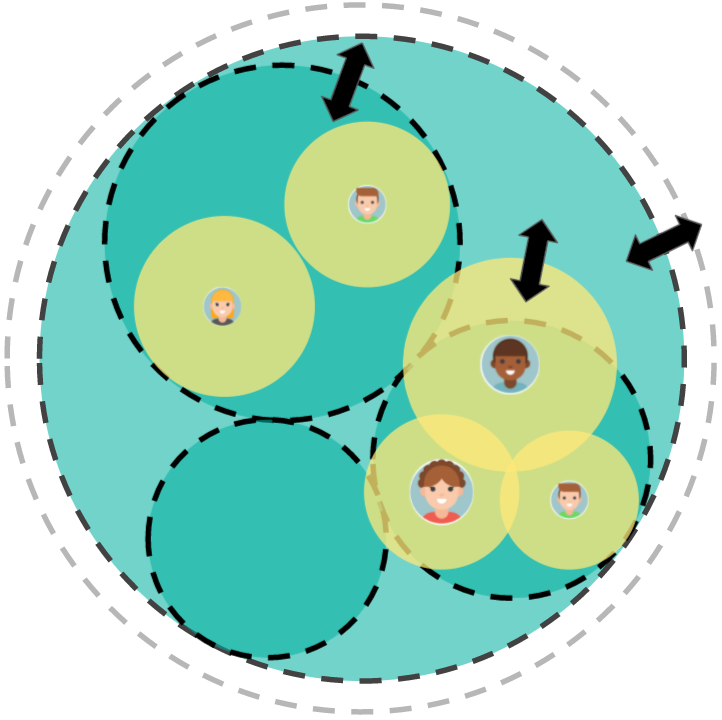# Circles Budgets - draft
## Circle Budgets - draft
*(this is from Joachim reflecting the Hypha circle budgeting process which will be mapped to the DHO functionality later)*
### Living Budgets
Hypha has adopted a strategy of *Living budgets* that adapts to the environment and allows changes to the organism in near real-time. These living and breathing membranes provide the foundation for healthy competition amongst circles and roles in pursuit of purpose - rewarding successes and thriving organs and removing stagnation and parasitic behavior. There are two types of budgetary boundaries depicted below - (1) organizational budgets (funds available in the treasury, shown in grey) and (2) circle budgets (funds available in the circle, shown in black). Both boundaries need to be negotiated within the organism as a whole (sensing into the wants and needs or its members) and revisited on a regular basis.
[](https://guide.hypha.earth/uploads/images/gallery/2021-05/image-1620934869867.png)
Budgets set natural boundaries to growth or detox. Circles gain and maintain a budget by how well they’re executing and providing value to the whole. This requires some signal to show what value was added and prevents members from overextending work ("I get paid by the hour") and from wasting resources ("we needed to justify our budget"). The organization can decide how these boundaries are enforced - either by defining a hard ceiling ("sorry, we are out of budget for this contribution") or a soft ceiling ("you are stepping over the budget boundary with this assignment, please reconsider"). In a near real-time scenario, these boundaries can be adjusted within the circle (reduce and increase activities) or across circles (reduce and increase spending).
[](https://guide.hypha.earth/uploads/images/gallery/2021-05/image-1620935380344.png)
### Budgeting Process
The budgeting process breaks down into two parts:
1. Overall allocation of funds routed to anchor circles (after deliberation and vote)
2. Specific allocation of funds within circles and sub-circles (within circle autonomy)
In the depiction below for the overall allocation of funds, we have three anchor circles receiving 50%, 30% and 20% of the overall budget of the organization. Initial budgeting figures can be created by
1. Creating an initial pro-forma budget sheet with monthly estimates for all expenses \[1\]
2. Doing a co-evaluation (via contribution accounting) to finalize the circle allocations \[1\]
Note that after the initial budgets have been completed, the resulting distributions can be used to plug into the co-evaluation process and are no longer needed.
[](https://guide.hypha.earth/uploads/images/gallery/2021-05/image-1620935626313.png)
In the depiction below for the specific allocation of funds within circles, we see the largest circle dividing funds among two roles, one taking about 55%, the other 45% of the circle budget. Note that there should always be a "buffer" for unforeseen expenses or additional contributions. Also note that there is an "anchor budget" as a catchall for roles that are not assigned to any circle.
[](https://guide.hypha.earth/uploads/images/gallery/2021-05/image-1620936009340.png)
\[1\] [The Hypha Circle Budgeting Sheet](https://docs.google.com/spreadsheets/d/1M0ZBhoh7hZYlYuTWjXTPWMpGObXcKjh-rEBre-10sq0/edit?usp=sharing)